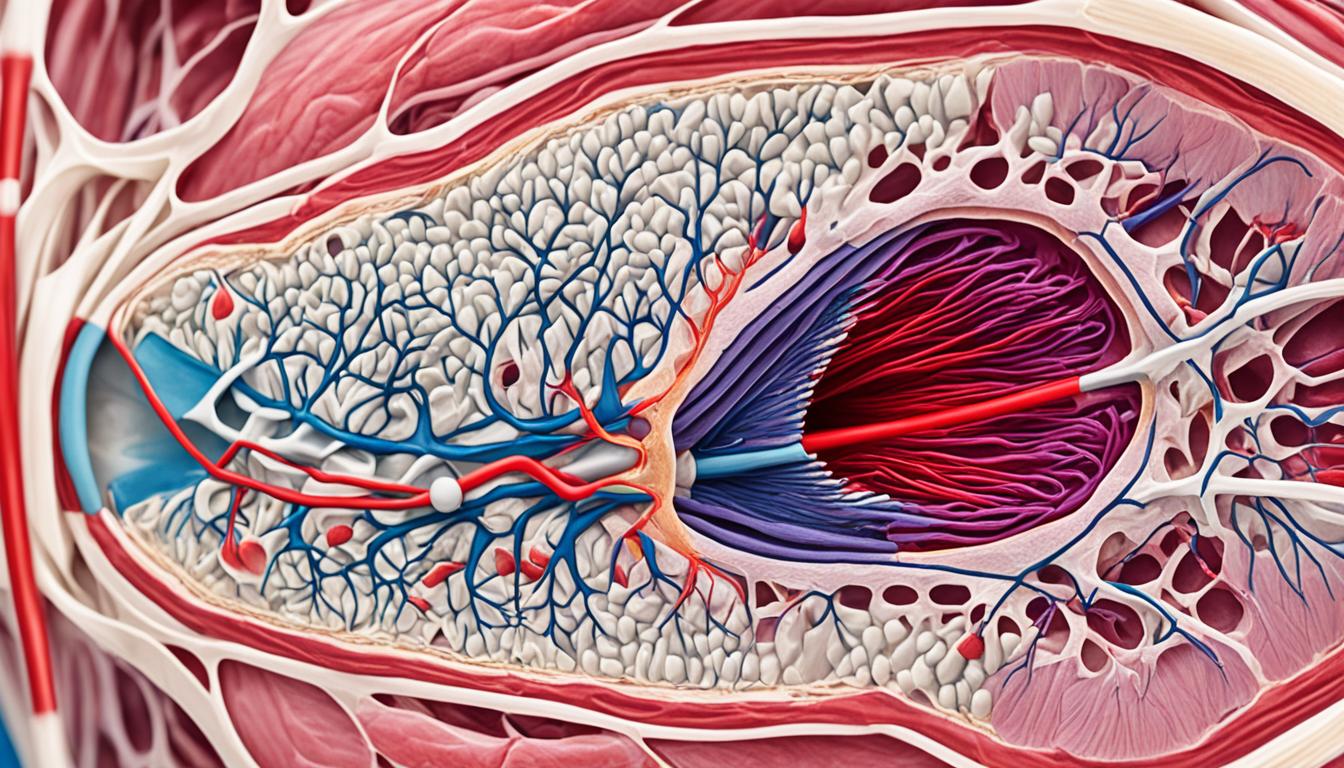Popliteal artery entrapment syndrome (PAES) is a rare illness that affects the popliteal artery. This artery carries blood from the heart to the legs. In PAES, the calf muscle might grow oddly, squeezing the artery. This can cause less blood flow to the leg, leading to pain, cold feet, numbness, and swelling.
PAES might be something you’re born with or something you get later. Young men who do a lot of sports are more likely to get it. Finding and treating PAES early can help solve the problem and stop the symptoms.
Diagnosis of PAES
Doctors may use a physical exam and tests like ultrasound, MSCT, and MRI to find PAES. These tests check the blood flow and if the artery is blocked. This helps doctors know for sure what’s causing the problem.
Treatment options
One way to treat PAES is with surgery. Surgeons can help by cutting the muscle to relieve the pressure on the artery. This surgery is done behind or inside the calf. Sometimes, a more complex surgery to go around the blocked artery is needed.
Stem cell therapy
Stem cell therapy is new and could be a treatment for PAES. It uses stem cells to help repair tissue and improve blood flow. While it’s still early, this method could be a way to help with PAES.
Key Takeaways:
- Popliteal artery entrapment syndrome (PAES) involves the compression of the popliteal artery due to abnormal calf muscle position.
- Symptoms of PAES include calf pain, cramping, cold feet after exercise, numbness, and swelling.
- PAES can be congenital or acquired, with the acquired form often seen in young men who engage in high-stress sports activities.
- Diagnosis of PAES involves clinical evaluation and diagnostic imaging techniques such as ultrasound, MSCT, and MRI.
- Treatment options for PAES include surgical intervention to release the compressed artery and correct the abnormal calf muscle.
- Stem cell therapy is being explored as a potential treatment option for PAES, focusing on tissue regeneration and improving blood flow.
Risk Factors and Diagnosis of Popliteal Artery Entrapment
Popliteal artery entrapment syndrome (PAES) can happen because of different risk factors. These factors make it more likely to develop this condition. Knowing these risks is key to spotting and treating the condition early. Also, getting a correct diagnosis is crucial. It confirms popliteal artery entrapment and shows how severe it is.
Popliteal Artery Entrapment Risk Factors
Popliteal artery entrapment mostly shows up in these groups:
- Young people, especially in their teens or 20s
- Males more often than females
- People who do stressful sports like running, cycling, or weightlifting
Having these risk factors means you might get popliteal artery entrapment. But not everyone with these risks will get it.
Clinical Diagnosis of Popliteal Artery Entrapment
Doctors and specialists look at key things during the diagnosis:
- Do you feel pain or cramping in your calf, especially during exercise?
- Are the pulses in your leg normal or are there issues?
These checks give hints about popliteal artery entrapment. Yet, to be sure and measure how bad it is, imaging tests are needed.
Diagnostic Imaging for Popliteal Artery Entrapment
Imaging tests are very important for finding and studying popliteal artery entrapment. Here are the main ones used:
- Ultrasound: It’s a simple test using sound waves to take pictures of the artery’s inside. This shows flow, blockages, and more.
- Multi-slice computed tomography (MSCT): Offers detailed cross-sections of your leg to check the artery.
- Magnetic resonance imaging (MRI): Uses magnets and radio waves to make detailed pictures without radiation. This method is good for soft tissues.
Doctors might also ask you to do the tiptoe test. This is where you stand on your tiptoes. It checks your blood flow and helps verify the diagnosis.
By using both clinical checks and imaging, doctors can make a clear diagnosis. This helps with the best treatment plan.
| Risk Factors | Prevalence |
|---|---|
| Young age | Higher prevalence in individuals in their teens or 20s |
| Male gender | More commonly observed in males |
| High-stress sports activities | Frequently seen in individuals engaged in activities like running, cycling, or weightlifting |
Treatment and Complications of Popliteal Artery Entrapment
The main treatment for popliteal artery entrapment syndrome involves surgical intervention. This helps release the compressed artery and fix the calf muscle issue. Surgeons do the procedure through a small cut in the calf, either the front or the back. This depends on where the artery is pinched. In severe situations, artery bypass surgery might be needed. The main aim is to improve the blood flow to the leg and ease symptoms.
Complications from this syndrome can be serious. They include artery narrowing, ongoing pain, nerve and muscle damage, blood clots, and aortic aneurysms. Early diagnosis and treatment are crucial for a good recovery. It can resolve all problems.

